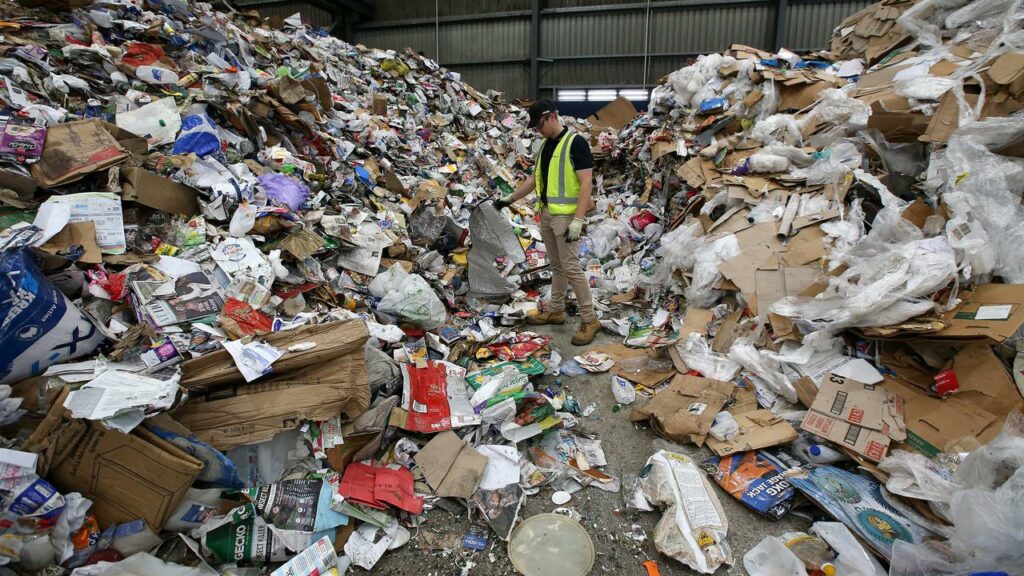Waste grows as recycling stagnates: report
Tracey Ferrier |

Australia’s landfill problem is escalating with recycling efforts failing to keep pace with ever-increasing mountains of waste, a new report shows.
The National Waste Report, published every two years since 2010, confirms once again that the nation’s waste burden is growing.
But Australia’s recycling rate isn’t moving, and the recovery rate for plastic is the lowest of all waste types.
In the 2020/21 financial year the nation generated an estimated 75.8 million tonnes of waste, up three per cent on 2018/19.
That’s the equivalent of 2.95 tonnes of waste for every adult and child in the country.
Despite the rise, the recycling rate has remained stagnant at 60 per cent.
Recycling and recovery rates were highest for metals at 87 per cent, building materials (81 per cent), paper and cardboard (62 per cent), organics (58 per cent) and glass (59 per cent).
But plastic, one of the greatest environmental scourges, runs last in the recovery race with just 13 per cent diverted from landfill.
The largest waste categories were building and demolition materials at 25.2 million tonnes, organics (14.4m tonnes), ash (12m tonnes) and hazardous waste (7.4m tonnes), most of it contaminated soil.
Plastic accounted for 2.6m tonnes, up from 2.5m tonnes.
Waste specialist Joe Pickin, who wrote the report, says far more engagement is needed with the sectors that are putting the most harmful substances into the waste stream.
“In particular, we’re going to have to push the packaging industry to make better use of these material, to recycle it back into packaging,” Dr Pickin said.
“That industry has really not got much to hold its head up about on this issue … it’s now made some decent commitments, and they are working hard towards them, it’s not been good enough to date.”
Dr Pickin said Australia can get on top of the problem, noting the data that underpins the report is between 1.5 and two years old.
“I don’t think it’s going to be indefinitely beyond us to get this sorted, it’s just going to take a fair bit of time. There’s a lot of complexity to it,” he said.
“We’re going to have to get better at chemical recycling, at mechanical recycling, we’re going to have to develop better markets.”
Environment Minister Tanya Plibersek said the government is working to bridge the gap between rising waste and stagnant recycling and recovery rates.
“We know that the way we are doing things now is not sustainable,” she said.
“Australians want to reduce their waste and use fewer disposable items in the first place – but we have to set up our economy to help them do this.”
Ms Plibersek said part of that will be reducing the use of plastic in the first place but also creating markets for ongoing reuse of waste, something state and territory environment ministers committed to in October.
“We’re investing $250 million in infrastructure and state-of-the-art advanced recycling solutions to sort, process and re-manufacture plastic, glass, paper, and tyres into valuable new products.”
AAP


